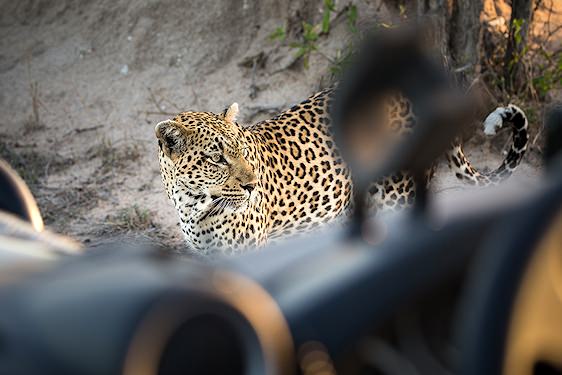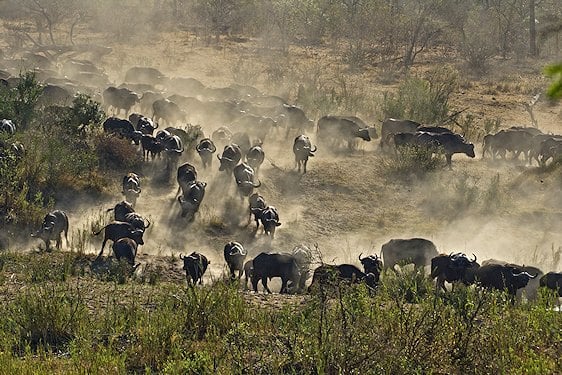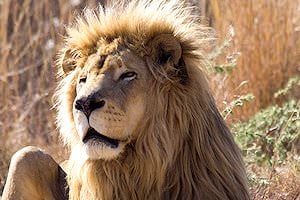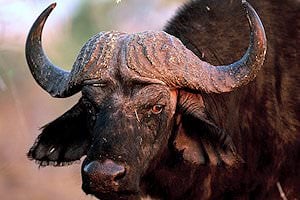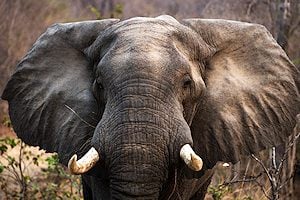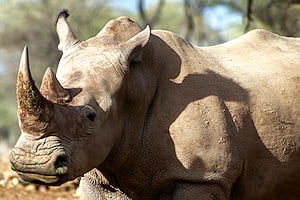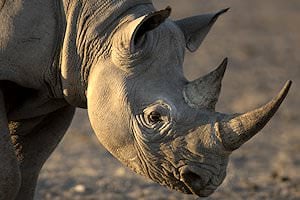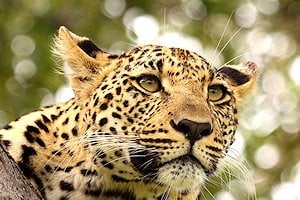Civet
The cat-like African civet is the continent's largest member of the family, Viverridae. You can encounter them on night safaris in Kruger Park, Namibia, and Botswana.
Need Advice?- Home
- >>
- African Travel
- >>
- South Africa
- >>
- National Parks
- >>
- Kruger National Park
- >>
- Mammals
- >>
- Civet
Description
The civet's coat is grey, with lots of black rosettes densely covering it, along with large black patches on its neck and tail. They are solitary, and distinguishing between the sexes is difficult.

In South Africa, civets can only be found naturally within the country's northern parts, where the Kruger National Park is situated. It differs in the rest of Sub-Saharan Africa, where they inhabit large areas. They occur in Namibia, Botswana, Zambia, Zimbabwe and Mozambique.

Status
The species seem endangered because of rare encounters. In reality, their shy, solitary lifestyles create this illusion. They are almost solely nocturnal and thus unseen by most visitors in parks like the Kruger National Park. IUCN's red list lists them as "least concern," which is justified by their thriving populations, especially in protected areas. Little is known about the direction of their population growth or decline.

Habitat
They prefer humid environments where water is readily available, and plant growth is dense. They aren't too fussy about the altitude or the type of growth in a particular habitat but require adequate cover in the form of shrubs or bushes and trees to shelter. Civets are omnivores that feed regularly on insects and birds. In addition to the fruits and nuts, they can forage above or below ground. They sometimes even hunt small mammals, including the newborn young of antelope.

Social Organization
Civets live solitary lives and are usually most active when they feed at night. It is when they risk being hunted or attacked - a risk every animal takes. Observations of civets in captivity indicate that they are antisocial as adults and only come into contact with others of their species when necessary, such as mating or when mothers care for their young in the early years of their lives. They are not fond of daytime activity and rarely seen in daylight.
Finest Safari Areas in Africa for Encountering Civet
We recommend the following National Parks and Private Reserves for the best chances of spotting the civet on safari game drives and bush walks.

Social Behavior
These animals are creatures of habit, which is evident in their daily behavior. They follow the same routes or paths as they move from burrows or growth cover they find shelter in during the day to the areas where they hunt or forage for food at night, leaving new footprints for observers to find. They have a keen sense of smell, which they use to find insects or other forms of prey by hovering over the ground with their noses. Scent marking is on their daily agenda. They do this by leaving excrement or feces in deposits covered by soil and tend to leave these on the edges of their home ranges, which may indicate some form of territorial behavior.

Reproduction
Civets going into a period of sexual activity may be more restless or agitated than usual. When suitable mates find one another, courting in the form of aggressive and submissive displays is exchanged between the sexes. Genital sniffing and vocalizations then take place before copulation. A gestation period of around 80 days ensues. Once these young are raised, they go through the same process from the tender age of only a year old.

Anti-Predator Behavior
When frightened or potentially threatened, a civet may sit down and stare at the area from which the disruption came before standing up, with the hair on its back raised, in an attempt to appear larger. Civets are higher up on the food chain than antelope or other herbivores and aren't as concerned with predators as those animals might be. Leopards, lions, and spotted hyenas are their main enemies.


